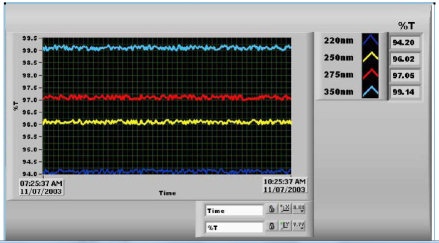
MEG is an important raw material in production of polyester fibers. The quality of the fibers is dependent on the purity level of the MEG precursor. MEG is therefore purified of impurities (e.g. diethylene glycol) by passing the stream through an ionexchange column. Over time, the column performance deteriorates and impurities begin breaking through.
Fiber grade MEG must comply with analytical purity tests in order to be salable. Additionally, the ion exchange columns shouldbe replaced precisely at the point of efficiency dropoff in order to avoid both column waste and impure product
.The traditional offline method for MEG quality control relies on pulling samples for lab analysis. The lab system compares thesample’s UV transmittance at a few wavelengths (220 nm, 240 nm, 275 nm, 350 nm) to that of demineralized water at thesame wavelengths. Since pure MEG has zero absorbance in the UV range, a simple principle applies: higher transmittance =higher purity. Fiber-grade MEG is required to have at least 97% transmittance at 220 nm.
The OMA system applies the same principle but with enormous advantages, including: (1) continuous analysis updating everysecond, as opposed to slow sample transport for discrete lab measurements; (2) fast response for immediately pinpointingfailure point of ion exchange column; (3) totally automated sampling system normalizes measurement by Auto Zero ondistilled water; (4) installation of system close to sampling point for convenience of process adjustment.
Documentation
 Measuring Purity of MEG (monoethylene glycol)
Measuring Purity of MEG (monoethylene glycol)